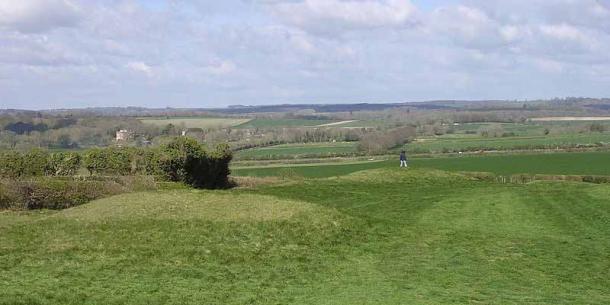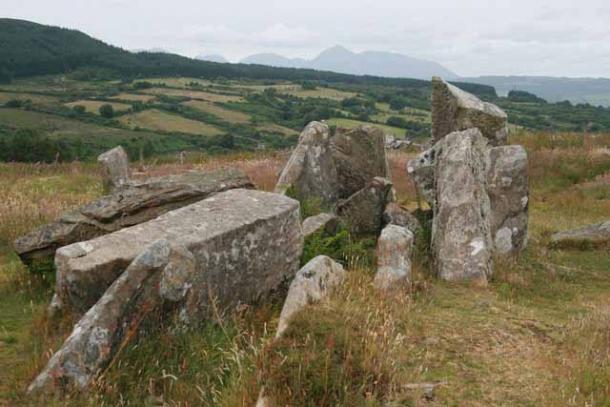An ancient “cursus monument” was discovered at the Tormore site on the Isle of Arran. The archaeologists working at the site think it is likely that people traveled from all over what is today Scotland to the western island around 5,000 years ago to visit this prehistoric temple.
A chambered cairn was discovered at this site in 1909, in which excavators found part of a jet necklace, which determined the area had been associated with the dead. However, now, Mr. Dave Cowley, Rapid Archaeological Mapping Programme Manager at Historic Environment Scotland , describes the kilometer-long cursus monument as a “cathedral of the day”. Mr. Cowley discovered the new site following a laser scan of the island of Arran last year.
Mapping The Ancient Prehistoric Temple
Cursus monuments are Neolithic structures representing some of the oldest prehistoric monumental architecture in the Islands of Britain and Ireland. According to an article in the Scotsman, this new discovery is helping to reshape Neolithic history in Scotland because, “such landmarks [are] usually associated with the east coast.” Mr. Cowley first detected the site last year using Light Detection and Ranging (Lidar) technology, and he mapped two lines of roughly parallel mounds, about 30 to 40 centimeters (11.81-15.75 inches inches) high, which extend about a kilometer (0.62 miles) across the Scottish landscape.

The site of the cursus monument was discovered after these two parallel lines, marked here by red arrows, were picked up by a laser scan of Arran landscape. ( HES/Dave Cowley ) It is likely that people traveled from all over what is today Scotland to the western island around 5,000 years ago to visit this prehistoric temple.
The two linear mounds run to the crest of a ridge, meaning the ritual site was very carefully located within its landscape, and the researchers said “It would have had impact. There is an element of design to it, a form of landscape architecture.” And 5000 years ago these two linear mounds would have been topped with timber posts, forming a vast rectangle that might have been set alight during rituals to serve as processional routes in death ceremonies .
What Lies Beneath
Reflecting on his discovery, Mr. Cowley bets that if you were to ask anyone in his survey team what they thought they were most likely to find on Arran, “not one of them would say a Neolithic cursus monument… because there is no other on Arran… its unique on the island.” The cursus at Tormore suggests many more similar sites might be out there waiting to be discovered in the west of Scotland, but Mr. Cowley points out that because they were built from timber “you are not likely to see them in the unimproved peat landscape of the west coast.”

Example of a cursus monument. The earthworks of the Dorset Cursus’ southwestern terminal from the nearby long barrow. The enlarged bank ends can be clearly seen, and the end of the cursus is squared off with a terminal bank. (Jim Champion/ CC BY-SA 2.5 )
The team suspect a Neolithic superstructure lies hidden beneath the peat layers at this site, but this cannot be determined without physical excavation. But if this really is the case, and the ancient ritual site is excavated, it would be like discovering “a whole new layer in a box of chocolates of new things,” Mr. Cowley told the Scotsman.
LIDAR allows researchers to look at imagery of archaeological sites with vegetation filtered out, and more than 1,000 unknown archaeological sites have been found on Arran using the technology. However, what LIDAR cannot do is penetrate a meter deep into 5000 year old peat, so this site, like so many others, will be scheduled for excavation.
A Tiny Ancient Island With A Big History
The island of Arran hosts many prehistoric sites, including Neolithic standing stones , Bronze Age burial cairns, and Iron Age strongholds. Dun Fionn is a ruined hill fort overlooking Holy Isle and the Fort at Kings Cross Point has a Viking’s grave. But contemporary with the cursus, two neighboring chambered cairns at Largymore represent the Giants’ Graves , in which, according to Irish folklore, a pair of giant warriors slept, and one of them was the legendary god-like warrior, Fionn mac Cumhaill , leader of the mythological Fianna.

Giants’ graves, near Whiting Bay, Isle of Arran. (Becky Williamson/ CC BY-SA 2.0 )
On the west coast of Arran, King’s Cave is where Sir Walter Scott said the 14th-century King Robert the Bruce encountered the struggling spider while he was defeated and on the run. It was that spider’s determination to spin its web that inspired Bruce to return to the mainland and defeat the English army. But now, adding to the island’s long list of ancient sites, the cursus prehistoric temple site represents the largest archaeological site on the island and in this entire part of the west coast of Scotland.
Top image: Prehistoric standing stone on Machrie Moor, Isle of Arran. A prehistoric temple has also been discovered recently on the island. Source: Campo / Adobe Stock
By Ashley Cowie
Related posts:
Views: 0
 RSS Feed
RSS Feed
















 January 24th, 2021
January 24th, 2021  Awake Goy
Awake Goy  Posted in
Posted in  Tags:
Tags: 
















